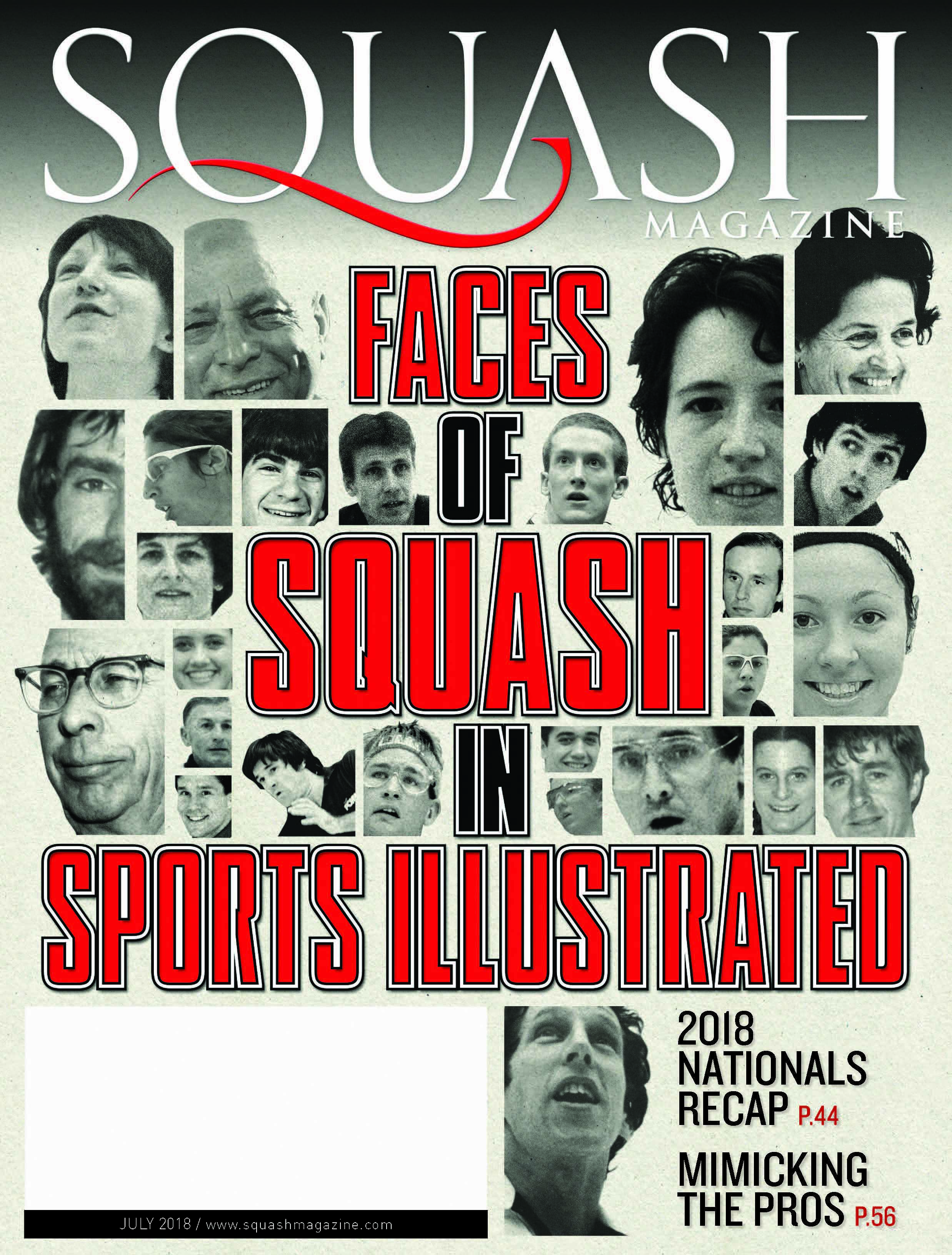In the inaugural issue of Sports Illustrated in August 1954, a small column called “Pat on the Back” ran in the front of the magazine. It was meant, they said, as “a salute from the editors to men and women of all ages who have fairly earned the good opinion of the world of sport, regardless of whether they have yet earned its tallest headlines.” In January 1955, in an issue with Roger Bannister on the cover, George Healey became the first squash person to be featured for earning the good opinion of the world of sport. Included was a large photograph of Healey and two Detroit Racquet Club members, all dressed in tuxedos, holding racquets on a squash court. A year later SI changed the title of the column to “…These Faces in the Crowd….” and moved it to the back of the magazine. The second installment featured the world’s most famous squash player, Hashim Khan. In 1958 the column was shortened to “Faces in the Crowd….” Eventually, the ellipses fell away. Although squash has only appeared on a Sports Illustrated cover just once (in February 1958 in the form of Diehl Mateer and Henri Salaun), it turns out that that SI has diligently if a bit haphazardly covered the game of squash. When SI reporter Henry Bushnell kindly searched their archives, we discovered 141 squash players. That comes to more than two a year, far more than even the most sanguine squash player and SI reader might have guessed. In early years, the language was in Timespeak, the original house style of Time magazine, with no articles and few conjunctions. Sexism was also apparent, as the entries for the “so feminine” Margaret Varner in 1956 or “socialite” Peggy Carrott two years later. Sometimes the fact-checking was not rigorous. It was Nathan Stauffer, not Mason, for the 1965 entry on Joyce Davenport. Was Jonah Barrington’s nickname really “Madman?” In 1976 Jack Barnaby’s national title count was at sixteen, not twenty. Rudy Rodriguez was not the world junior champion in 1988 (it was Del Harris). In 1993 Joyce Davenport was not the first American to win a world title (Jack Herrick was, in 1984). In 1995 Marty Clark was neither the youngest national champion (think: Harry Conlon or Alicia McConnell) nor the first American to win a pro title outside the country (think: the dozens who won titles in Canada and Mexico) but was probably the first to win one in Asia. There were typos, a comma ending Mario Sanchez’s entry and Meredeth Quick’s name getting misspelled in 1994. The errors could get personal, at least in my family. In 1959, the entry for my father was a mess—they misspelled Bob Hetherington’s name and ran Hetherington’s photo instead of Jim Zug’s. Hastings Griffin wrote a letter to SI: “The plug for Zug was the wrong mug.” Often the entries are intriguing. I remember the week Wendell Chestnut appeared in Faces in 1988—it seemed then (and even more so now) like a milestone for the game. Peter DeRose made it in two consecutive mentions in 1996, both times for losing in the finals of a tournament. John Nimick used to be a part-time cable television salesman? Perla Hewes’ story sounds incredible: a thirty-year-old Filipina and mother of three at a non-squash power capturing the national intercollegiate title? The arbitrary nature of the world’s leading sports magazine dipping willy-nilly, apparently on whim rather than deep research, into the world of squash is fascinating. Yes to Trey Sayes but no to Julian Illingworth? Mixed in with the remarkable, recordsetting victories are women and men with decidedly more obscure and inconsequential achievements. But that is the beauty of Faces in the Crowd: like life itself, it is all relative.





